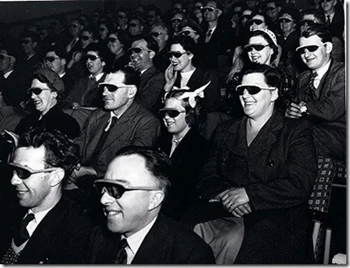 You've reviewed the anxiety disorders material in the DSM by now. But do you know it? Know it, that is, well enough to correctly answer questions about the material on the social work licensing exam? SWTP practice tests cover anxiety disorders and lots more. Sitting down with a full-length practice test--170 questions, four hours--is the best way to get prepared to sit down and take the real thing. Here, in the meantime, is a one-off--a free practice question based on the anxiety disorders chapter of the DSM.
You've reviewed the anxiety disorders material in the DSM by now. But do you know it? Know it, that is, well enough to correctly answer questions about the material on the social work licensing exam? SWTP practice tests cover anxiety disorders and lots more. Sitting down with a full-length practice test--170 questions, four hours--is the best way to get prepared to sit down and take the real thing. Here, in the meantime, is a one-off--a free practice question based on the anxiety disorders chapter of the DSM.
A woman tells a social worker that she no longer goes to the movies. "Sitting on the aisle isn't enough," she says. "I keep thinking about trying to get out of there through the crowd." When she was younger, the woman used to go to movies and concerts regularly. "It's been years," she reports. "I wouldn't be able do it. Standing on line? Sitting in a crowd inside? I'll binge watch shows at home, thanks very much." What is the MOST likely diagnosis for this client?
A. Specific phobia, situational type
B. Social anxiety disorder
C. Agoraphobia
D. Adjustment disorder, anxious type
What do you think?
You may sympathize with the woman's preference for binge-watching TV over going out to movies or concerts. But what the woman describes may not be just a preference. "I wouldn't be able to do it," she says. An anxiety disorder of some kind is likely present. But which one? Let's take the answers one at a time.
Adjustment disorder is "the development of emotional or behavioral symptoms in response to an identifiable stressor." It might be helpful to think of adjustment disorder as a cousin of PTSD. Here, there's a more phobic quality to the client's fear. Additionally, the fear and avoidance have persisted for years, while adjustment disorder is generally a shorter-term diagnosis.
Social anxiety disorder has its appeal here, but the client's fear isn't specifically social. Social anxiety disorder is characterized by fear of being exposed to possible scrutiny of others. This can be part of fearing crowds, but other diagnoses get at this fear more directly.
Specific phobia, situational type is even more alluring. But it's not the best of the choices offered here. This sounds like situational type specific phobia. And, if there were no other diagnosis that covered the precise symptoms the client describes, than that would be the diagnosis. Specific phobia, situational type can include many different things--fear of airplanes or elevators. It includes fear of small confined spaces or the dark. But there's another diagnosis that addresses fear of lines and crowds, and of feeling trapped. That diagnosis is...
Agoraphobia. To make a diagnosis of agoraphobia, outsized fears need to be present at least two of the following: Using public transportation; being in open spaces; being in enclosed spaces; standing in line or being in a crowd; being outside of the home alone. The client above appears to fear standing in line and being in a crowd in an enclosed space. She may just barely meet criteria for agoraphobia. But "just barely meeting criteria" isn't a choice here. You have to choose A, B, C, or D.
C--agoraphobia--is your best pick.
For more reading about anxiety disorders, including agoraphobia, try:
Happy studying and good luck on the exam!

 You've reviewed the anxiety disorders material in the DSM by now. But do you know it? Know it, that is, well enough to correctly answer questions about the material on the social work licensing exam?
You've reviewed the anxiety disorders material in the DSM by now. But do you know it? Know it, that is, well enough to correctly answer questions about the material on the social work licensing exam?